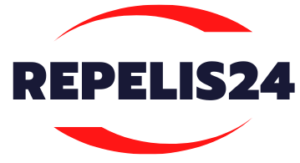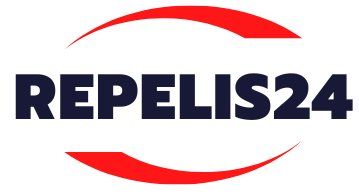In high-pressure sports environments, cardiac emergencies don’t wait for ambulances. Whether it’s a sudden collapse on the football field, a basketball player fainting mid-game, or a gym trainee showing signs of cardiac arrest—knowing how to perform CPR can be the difference between life and death. That’s why CPR certification isn’t just for doctors or lifeguards anymore. In today’s athletic world, it’s becoming standard for coaches, trainers, physiotherapists, and even team captains.
The reality is that sports-related cardiac events, while not frequent, are often fatal if not treated within minutes. According to a study published in the British Journal of Sports Medicine (2020), survival rates for sudden cardiac arrest (SCA) during sports improved by threefold when a trained responder administered CPR within the first 2 minutes. That stat alone explains why professional sports teams and elite training centers now include CPR training as part of their onboarding.
But it’s not just about checking a box for compliance. CPR training for sports professionals is different—it’s tailored to real-world scenarios: crowded sidelines, turf fields, high-adrenaline environments. Training is also designed to address sport-specific risks like commotio cordis (a sudden arrhythmia from a blow to the chest), heatstroke-related collapses, or exercise-induced arrhythmias in athletes with undiagnosed heart conditions. In each case, CPR must be fast, effective, and confident.
So whether you’re a strength coach, a PE teacher, a referee, or an athlete yourself—CPR certification is more than a credential. It’s a responsibility. Here’s a deeper look at what you need to know.
Do Sports Professionals Really Need CPR Certification?
The short answer? Yes. The long answer? Absolutely—especially if you’re involved in competitive or youth sports where medical staff may not always be on-site. The myth that CPR certification is only for EMTs and hospital workers is dangerously outdated. In athletic settings, the first person to reach a collapsed athlete is often a coach, assistant trainer, or even a teammate—not a doctor.
For example, high school sports programs in the U.S. now require CPR certification for all coaches. This isn’t just a precaution—it’s based on evidence. A large-scale study in Circulation (2018) found that early CPR improved out-of-hospital cardiac arrest outcomes in athletes under 35 by over 60%. Another report from the American Heart Association stresses that survival rates drop by 10% for every minute that defibrillation and CPR are delayed. That’s not a scare tactic—it’s biology.
Athletes are generally healthy and fit, but that doesn’t make them immune. Conditions like hypertrophic cardiomyopathy (a thickening of the heart muscle) or long QT syndrome often go undetected until a crisis happens. When someone collapses mid-practice, there’s no time for guesswork—you need people around who can jump in and start compressions within seconds. CPR training gives them that confidence.
Beyond emergencies, some clubs require certification to meet insurance or league regulations. For sports medicine staff, CPR and AED training are non-negotiables. But it’s not just about career checklists. If you work with athletes—whether it’s footballers, swimmers, wrestlers, or CrossFitters—you owe it to them to know what to do in a crisis.
How Do I Prove My CPR Certification If I’ve Lost My Card?
It happens all the time. You took the training, you got certified, but now you can’t find your CPR card—and someone just asked for it. Whether you’re applying for a coaching position, renewing your club license, or traveling with a team to a tournament that requires proof of medical readiness, losing your CPR card can feel like a headache. But it’s usually fixable with one call or email.
Most CPR certification programs—especially those recognized in the sports world like the American Heart Association (AHA), Red Cross, or NSC—offer digital records. If you completed your training through a credible training provider, you likely have an eCard or digital certificate stored on their website. You can log in with the email you registered with and download a replacement instantly. Some organizations even offer mobile apps that store your certification for easy access during competitions or travel.
Why does this matter in the sports setting? Because proof of training isn’t optional in many athletic environments. If you’re working in a youth league, attending a national coaching clinic, or part of an athletic department, administrators may require up-to-date certification for liability reasons. During emergency drills or health inspections, failing to show valid CPR training can disqualify staff from participating.
There’s also a growing move toward centralized databases. For example, certain state athletic boards now require coaches to be listed in CPR registries. In a 2021 policy review from the Journal of Athletic Training, 79% of U.S. secondary schools required visible CPR credentials for all sports-related staff. That number is expected to rise as governing bodies tighten health safety compliance.
To prevent issues, keep a backup of your digital certification on your phone or cloud. Also, add the renewal date to your calendar—CPR cards typically expire every two years. Being prepared isn’t just about emergencies—it’s about accountability in your role.
Why Is Hands-On CPR Training Non-Negotiable in Sports?
Anyone can watch a video about CPR. But when an athlete goes into cardiac arrest and collapses mid-sprint, the difference between watching and doing becomes painfully obvious. Hands-on CPR training isn’t just about learning what to do—it’s about building real-time reflexes so you don’t freeze when seconds matter.
In the sports world, where things move fast and intensity is high, muscle memory is everything. A proper CPR class puts you through physical drills—compressions, breaths, switching roles, AED use—in a way that mirrors game-day tension. It’s not about being gentle; it’s about building pressure and rhythm into your body so that your response becomes automatic. A paper in Resuscitation Journal (2019) found that participants who underwent hands-on training retained proper compression technique 2.4x longer than those who only watched instructional videos. That matters when you’re the only person standing between an unconscious player and their chance at survival.
Hands-on practice also allows for corrections. Most CPR programs use sensor-equipped manikins that give real-time feedback on compression depth and speed. Instructors correct posture, hand placement, and breathing technique. These subtle adjustments aren’t just for show—they can double your chances of performing effective CPR under stress. The New England Journal of Medicine (2020) found that compression quality declined by 30% in untrained individuals during real-life simulations. That gap disappears when people are trained hands-on.
Sports emergencies are unpredictable. Whether it’s a heat-related collapse, impact to the chest (like commotio cordis), or sudden cardiac arrest in a previously healthy athlete, there’s no time for hesitation. Hands-on CPR training is the only way to prepare your body and mind to act in real time. Watching won’t cut it. Practice does.
Does CPR Training in Sports Cover AED Use Too?
Absolutely—and if it doesn’t, it should raise a red flag. In the context of sports, CPR and AED training go hand in hand. Learning how to do chest compressions is only half the equation. If an athlete experiences sudden cardiac arrest (SCA), early defibrillation is what restarts the heart—CPR just buys time until that happens.
An automated external defibrillator (AED) is designed to be used by anyone. It literally tells you what to do with voice and visual prompts. Still, in the pressure of a real-life emergency on the field, even “simple” steps can be overwhelming. That’s why sports-focused CPR courses include hands-on AED practice with dummies, pads, and full-speed simulations.
A lot of sports complexes, schools, and stadiums now have AEDs on-site. But here’s the thing: having an AED is useless if no one knows where it is, how to open it, or how to use it properly under pressure. A 2021 study in Sports Health found that in 35% of cardiac emergencies during youth sports, delays in AED access occurred—even when one was available—mainly due to poor training and response time.
AED training teaches you how to:
- Recognize the signs of cardiac arrest (not just “passing out”)
- Retrieve the AED quickly and power it on
- Place the pads correctly (very important for athletes wearing gear)
- Follow real-time prompts without overthinking
- Deliver a shock if advised, and resume CPR immediately
In sports environments, speed is everything. According to the American Heart Association, survival rates for SCA jump from 10% to nearly 70% when CPR and defibrillation are performed within 3 minutes. That’s why organizations like the NCAA, FIFA, and IHSA now recommend that AED drills be done during preseason just like any other emergency protocol.
Bottom line: AED use is part of CPR training for sports for a reason. It’s how you bring someone back. If your course doesn’t include hands-on AED drills, find a better one.
Can Someone With No Medical Background Take CPR Training for Sports?
Definitely—and honestly, they should. CPR training isn’t just for medics, coaches, or athletic trainers. In real-world emergencies, the person standing next to the athlete is often a parent, team captain, or even a volunteer. That’s why CPR programs designed for sports include non-medical participants in every class.
The idea that you need a medical background to learn lifesaving skills is outdated. CPR classes are built on simple, actionable steps. You don’t need to know human anatomy or physiology—you need to know how to respond when someone collapses, stops breathing, or loses consciousness. That means recognizing cardiac arrest, calling for help, beginning compressions, and using an AED if available.
There’s also research backing this up. A study published in BMJ Open Sport & Exercise Medicine (2022) found that bystander intervention in sports cardiac arrest cases—most of them untrained civilians—improved survival odds significantly when AEDs and CPR were attempted within 5 minutes. The point? Action beats hesitation, and training makes action possible.
For parents of athletes, CPR training brings peace of mind. For teammates, it creates a sense of responsibility and readiness. Some youth leagues even recommend that at least one adult per team or group is certified in CPR and AED use. High schools in over 20 U.S. states now require students to undergo CPR training before graduation—sports or no sports—because of how universal and accessible the skill has become.
Training options vary. Some organizations offer full CPR + AED certification for the general public, while others provide sport-specific programs focused on sideline emergencies, injury triage, and realistic simulations. You’ll learn everything you need in just a few hours—no jargon, no white coats, just real, practical skills.
Bottom line? If you’re involved in sports at any level, you don’t need to be a doctor to save a life. You just need to be ready. And CPR training gets you there.

